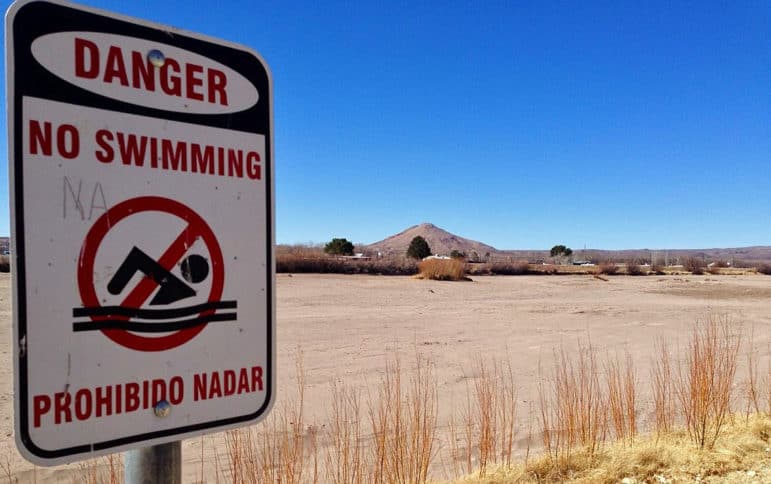
Heath Haussamen / NMPolitics.net
Faced with cutbacks in irrigation water from the Rio Grande, shown here, in recent years, many farmers in Doña Ana County turned on pumps to keep their crows — and livelihoods — growing.
Years of recent drought in the Southern New Mexico borderlands encouraged intensive pumping of groundwater in Doña Ana County. Faced with cutbacks in irrigation water from the Rio Grande, many farmers in Doña Ana County turned on the pumps to keep their crops — and livelihoods — growing.
To get a handle on the amount of groundwater in the Mesilla Basin aquifer near Las Cruces, scientists with the U.S. Geological Survey and the New Mexico Bureau of Geology and Mineral Resources announced they would begin measuring differences in the acceleration of gravity at several locations this week.
“The objective of this study is to measure the effects of surface water from rivers and streams on aquifer storage and to increase our understanding of local aquifer properties,” Andrew Robertson, USGS scientist, was quoted in a press release as saying. “This information may help water managers make informed choices about this finite resource.”
According to the USGS, “the change in aquifer storage is an important component of the water budget.”
The federal agency said the microgravity survey, which will be repeated in 2016, is one piece of a broader Mesilla Basin hydrologic monitoring program that involves the USGS, the City of Las Cruces Utilities, the New Mexico Office of the State Engineer, Interstate Stream Commission, New Mexico Environment Department, International Boundary and Water Commission, U.S. Bureau of Reclamation, and New Mexico State University.
Interested readers can find more information here.